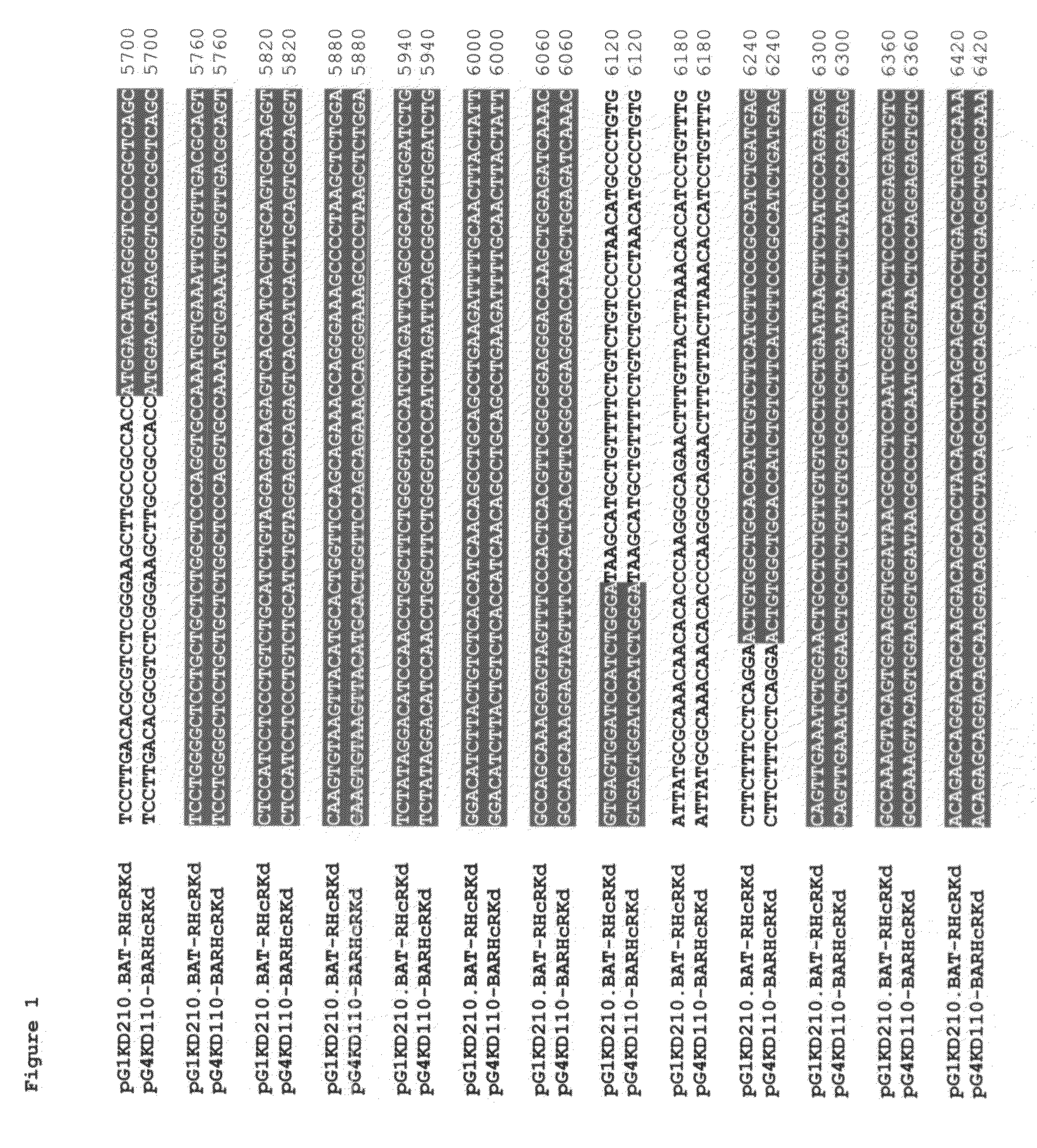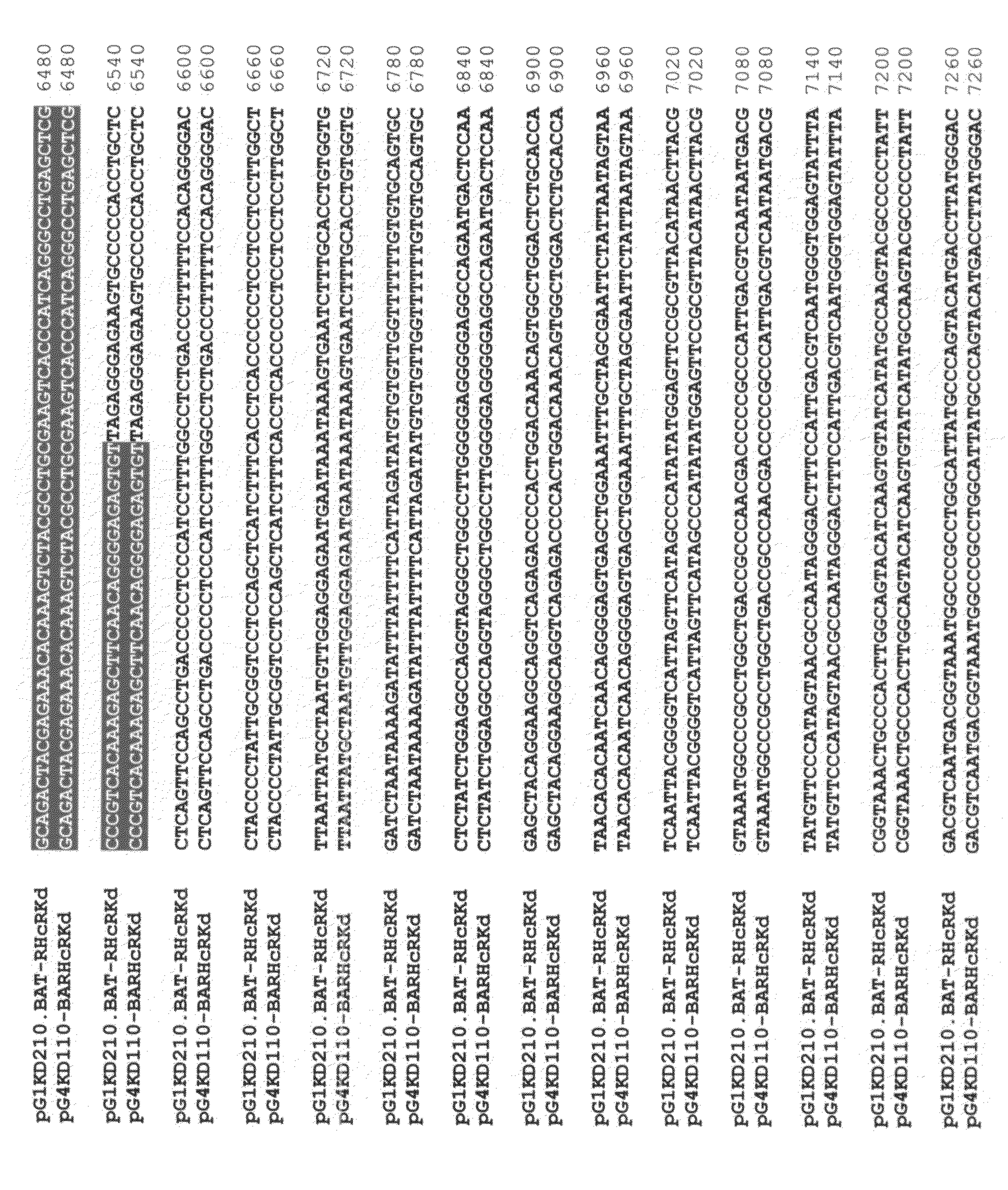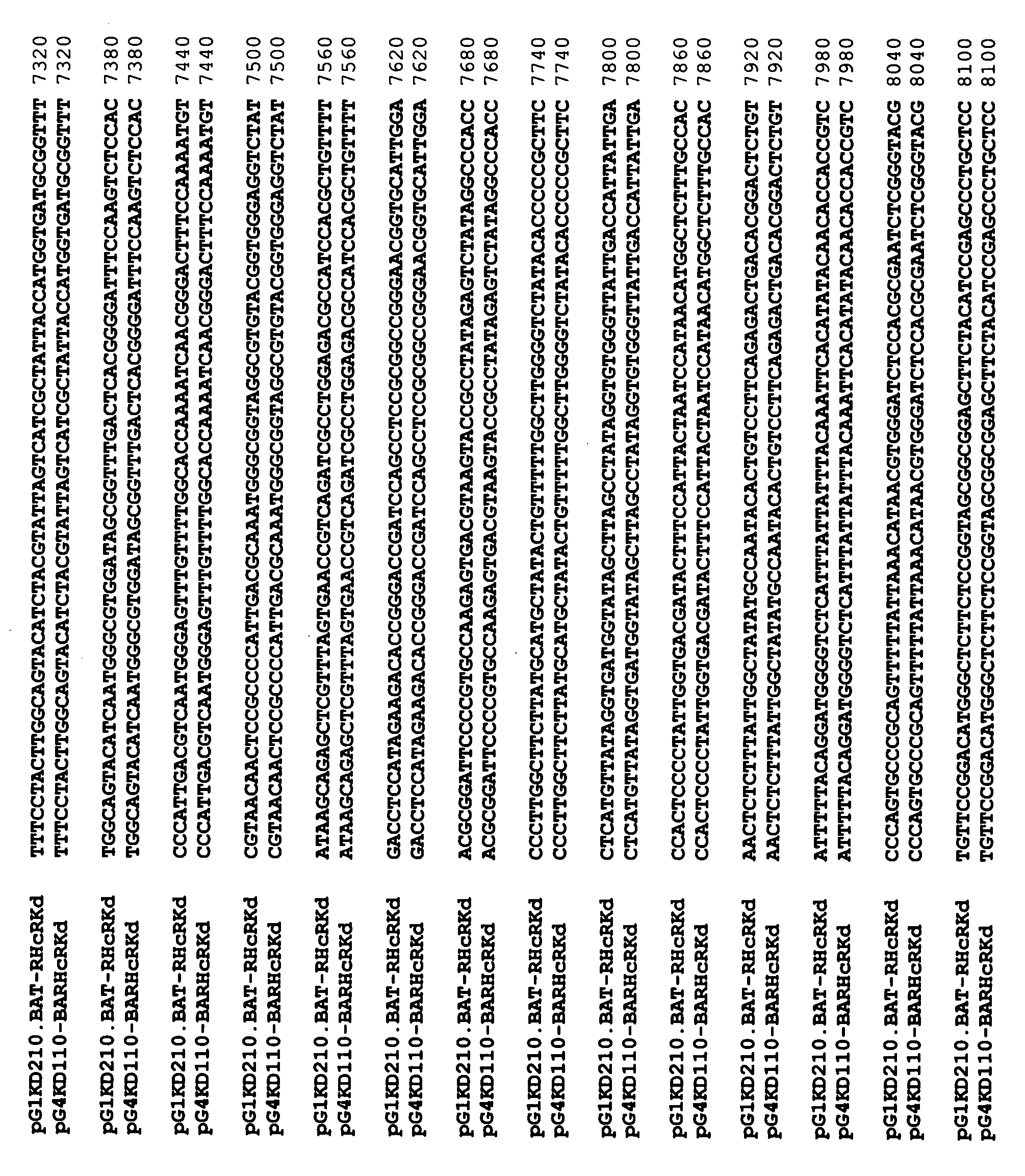System and method for production of antibodies in plant cell culture
a plant cell culture and production method technology, applied in the field of plant cell culture production system and method, can solve the problems of difficult scaling up to high production levels, safety concerns, and high cost of expression systems, and achieve rapid, consistent reproduction of transformed plants, and short period of time.
- Summary
- Abstract
- Description
- Claims
- Application Information
AI Technical Summary
Benefits of technology
Problems solved by technology
Method used
Image
Examples
example 1
Production of an Antibody in the System of the Present Invention
[0128]This Example describes the production of an illustrative antibody in the system according to the present invention.
Materials and Methods
[0129]Recombinant human IgG sequences were received from CureTech and are shown with regard to FIG. 1. Vectors termed pG1KD210 and pG4KD110 contain both heavy and light chain sequences. pG1KD210 codes for heavy chain γ1 and pG4KD110 codes for heavy chain γ4 (see FIG. 1). All genes contained introns. Using databases and molecular biology programs that are publicly available, the coding regions of the heavy and light chains and the splice sites of the antibody genes were mapped.
[0130]Prediction of splice sites was performed by using the NetGene2 program found at: www.cbs.dtu.dk / services / NetGene2 / (see also the following references: S. M. Hebsgaard, P. G. Korning, N. Tolstrup, J. Engelbrecht, P. Rouze, S. Brunak: Splice site prediction in Arabidopsis thaliana DNA by com...
example 2
Treatment with the Present Invention
[0181]The recombinant protein produced according to the present invention preferably comprises an antibody produced by a plant cell culture, which is preferably IgG4 but which may optionally be IgG1.
[0182]According to preferred embodiments herein, the antibody produced according to the present invention is suitable for treatment of a disease which is susceptible to treatment with such an antibody.
[0183]The method of treatment optionally and preferably comprises: (a) providing a recombinant biologically active antibody purified from transformed plant root cells, and capable of efficiently targeting an antigen. In a preferred embodiment, the recombinant antibody used by the method of the invention may be produced by the host cell of the invention. Preferably, this host cell is a carrot cell.
[0184]By “mammalian subject” or “mammalian patient” is meant any mammal for which therapy is desired, including human, bovine, equine, canine, and feline subject...
PUM
| Property | Measurement | Unit |
|---|---|---|
| diameter | aaaaa | aaaaa |
| diameter | aaaaa | aaaaa |
| volume | aaaaa | aaaaa |
Abstract
Description
Claims
Application Information
 Login to View More
Login to View More - R&D
- Intellectual Property
- Life Sciences
- Materials
- Tech Scout
- Unparalleled Data Quality
- Higher Quality Content
- 60% Fewer Hallucinations
Browse by: Latest US Patents, China's latest patents, Technical Efficacy Thesaurus, Application Domain, Technology Topic, Popular Technical Reports.
© 2025 PatSnap. All rights reserved.Legal|Privacy policy|Modern Slavery Act Transparency Statement|Sitemap|About US| Contact US: help@patsnap.com



